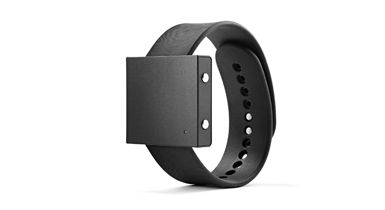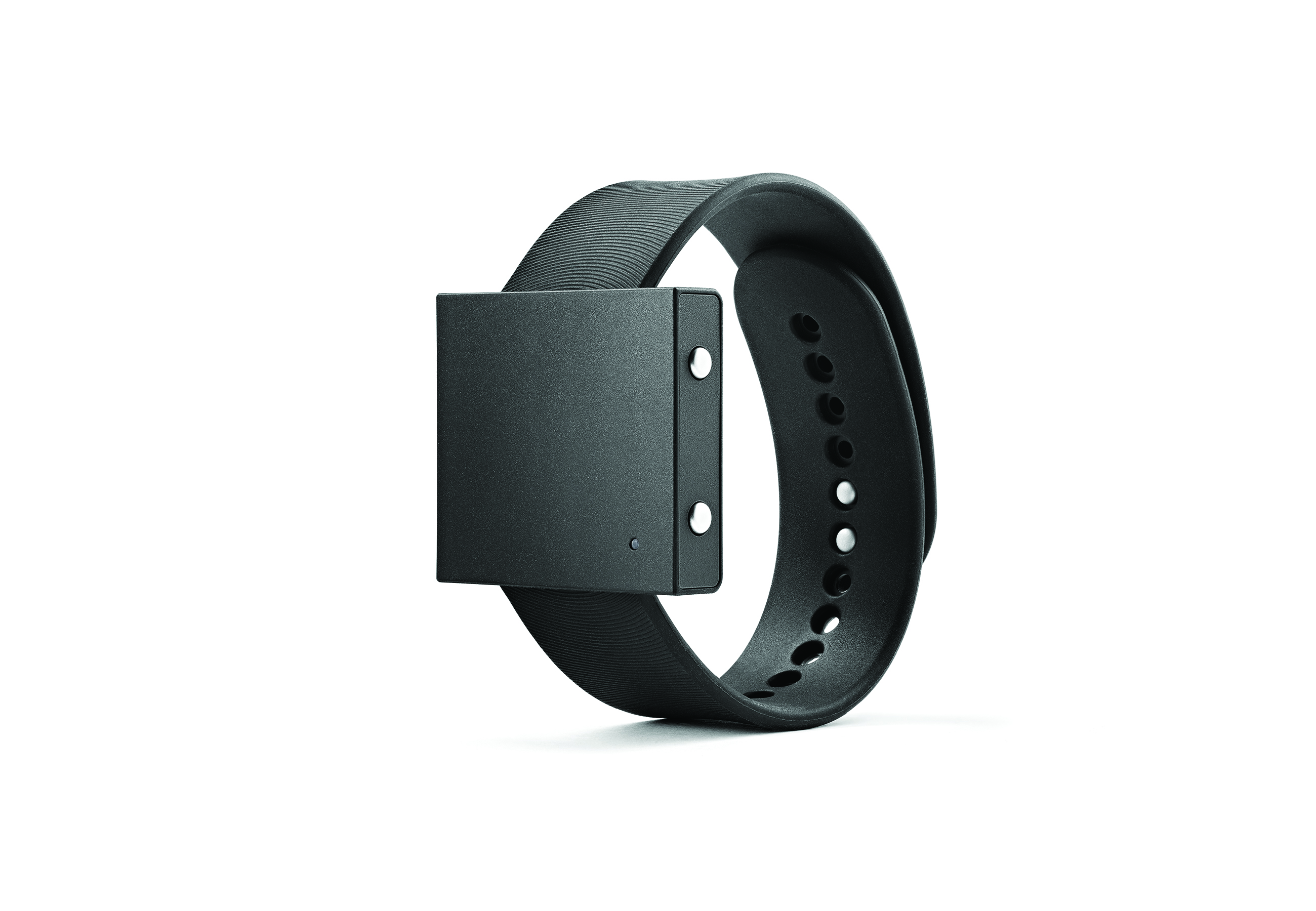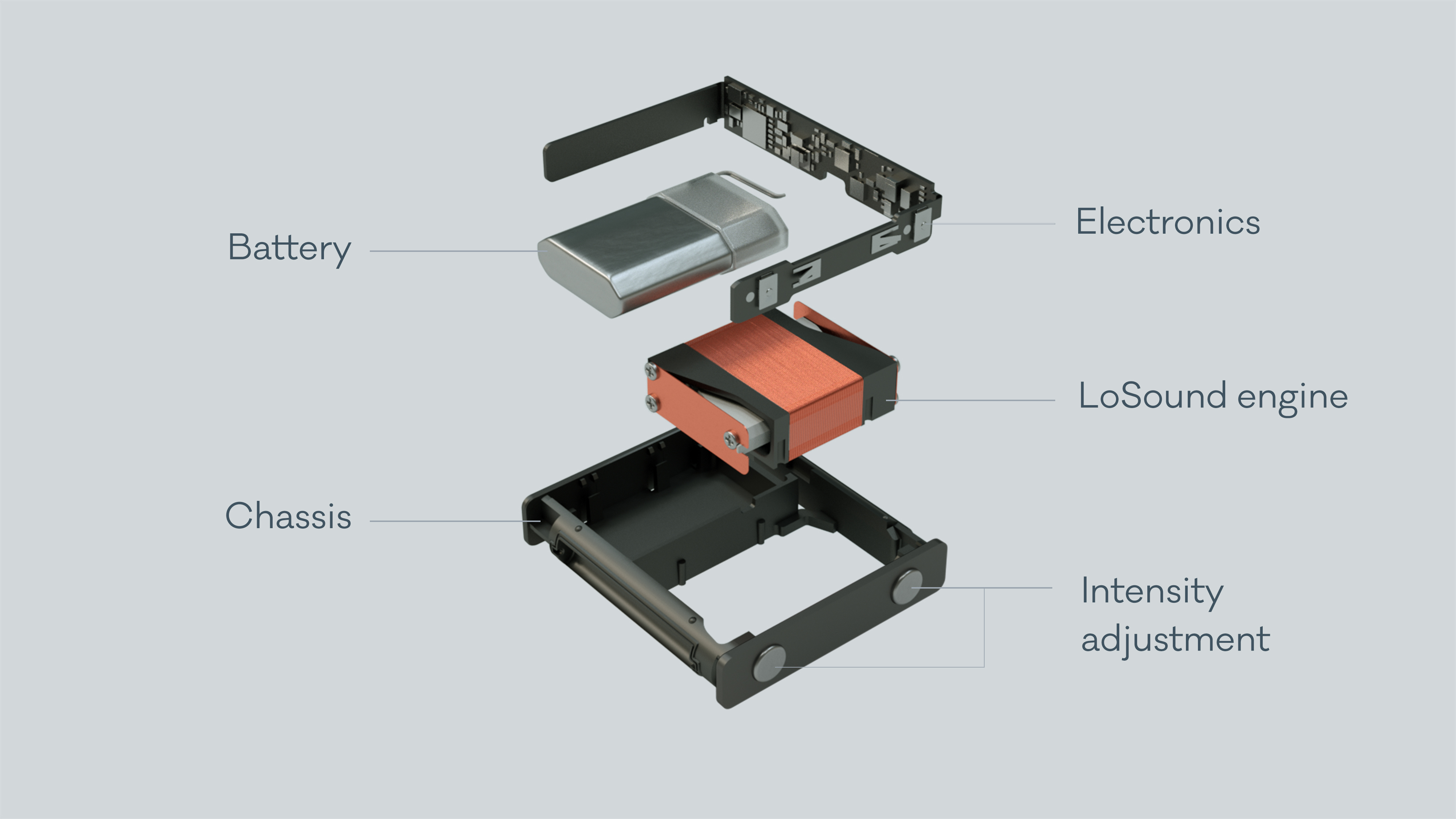Lofelt Basslet Review – A Wearable Subwoofer
Can Lofelt’s new wearable subwoofer deliver body-shaking bass? Alex Holmes straps in and prepares to get low… Details Kit Basslet Manufacturer Lofelt Price £179 Web www.lofelt.com Haptic feedback is a fast- growing area of technology that’s helping to bring a physical and tactile experience to using digital devices. Many of you will have no doubt […]

Can Lofelt’s new wearable subwoofer deliver body-shaking bass? Alex Holmes straps in and prepares to get low…
Details
Kit Basslet
Manufacturer Lofelt
Price £179
Web www.lofelt.com
![]()
Haptic feedback is a fast- growing area of technology that’s helping to bring a physical and tactile experience to using digital devices. Many of you will have no doubt experienced it with your iPhone: one example being when it emits a short vibration to tell you the thumbprint recognition hasn’t worked!
Lofelt is a Berlin-based company co-founded by a former Ableton product designer, and a former Native Instruments head of sound, who have developed the LoSound engine to explore the possibilities haptics has to offer. After two years of development and a hugely successful Kickstarter campaign, they have released the Basslet; a watch-sized subwoofer that delivers bass vibrations direct to your body.
One to watch
The Basslet is lightweight, is slightly larger than an Apple Watch and has been designed to be worn on your wrist. Although, in theory, you could strap it anywhere on your body, research suggests that the wrist is as good a place as any, as it’s close to the hand, which is hyper-sensitive to touch and vibrations. Built into the unit is the patent-pending LoSound engine, which produces high-fidelity frequency vibrations from 10 to 250 Hz: these transfer into your body and are silent to the outside world.
Given how many people listen to compressed MP3 music on small speakers and ear buds, the developers aim is to reintroduce a sense of tactile feedback, and to help people connect more physically and emotionally to their music, synths, instruments, or to their studios and DAWs. Other uses include working on mixing down bass when using smaller speakers, or at night without annoying the neighbours – helping to save your ears, as you can listen at lower volumes while still feeling the intensity of the music, helping a singer get more into the vibe while recording, or as a silent, wearable metronome for musicians.
In the box, you’ll find the Basslet itself, a spare, smaller strap along with a tool to help remove the strap from the unit, and a micro USB charging lead. There’s also a small Sender unit that plugs into any 3.5mm headphone output, and transmits the signal to the Basslet via an ultra-low-latency Bluetooth connection. This works straight out of the box; but you can also re-pair the devices at a later date should you have any issues. You then plug your headphones into the Sender, press a button on the side of the Basslet to switch it on, and you’re good to go.
If you’re looking to use the system in more of a studio setup, then an alternative would be to plug the Sender into the headphone output of your audio interface, meaning it won’t affect the signal path to your monitors. It could also be used with phones, music players, consoles, VR headsets, DJ or studio mixers, synths, drum machines or anything else with a headphone output (sorry, no iPhone 7s), although you’ll need an adaptor if it’s a 1/4-inch- jack output.
Get closer
Although it’s not exactly a thing of beauty, the design looks smart enough.It feels fairly durable, and is apparently splash proof and resistant to sweat, light rain and dirt. In practice, we found the strap a bit fiddly to put on to get a tight fit, but you have the option of replacing it with your own strap that may help get it closer to your skin and give you better results.
There are two buttons on the side of the Basslet that control the intensity of the vibrations up and down: and as a nice touch, these are magnetised, so you can snap it together with the Sender and charge both pieces together via the micro USB lead.
Elsewhere, there’s a small LED on the Basslet and also one on the Sender that flash in different ways. For example, the Basslet lights up white to show it’s on, and will flash red when the battery is low, and the Sender will flash red if the input signal is too loud, automatically reducing the intensity in the Basslet. It’s all simple, but neat and well designed.
Good vibrations
That’s enough description, let’s get on to the important bit – how does it feel? Well, when you turn it up to full, there’s a surprising amount of vibration for something so small. We tried listening to a range of music, and the results and enjoyment varied depending on the quality of the mixes. It’s particularly noticeable on things like drum fills, where you get an increasing sense of intensity as the drummer moves from the high to low toms, or in any music with more dynamic range in the low end. The fact it goes up to 250Hz means there’s a smooth transition from the low-mids to the sub frequencies.
It can also be good for enhancing more bass-heavy electronic music, but the experience is somewhat flatter when the low end is straighter, more predictable and more compressed. The difference is also quite noticeable when you compare a track with a tight low end with decent transients, to one with more sustained and long bass notes. As an example, you’ll feel the impact more on a tight 909 kick than on a heavily compressed 808 kick with a long tail.
As with a sub woofer, you’ll actually get more natural results if you dial it back a little from maximum intensity, as it’s easier for the brain to make the feeling disappear into the music more. We found the fidelity of the vibrations to be more accurate when we lightly pressed down on the Basslet to sit it more firmly onto our wrist, presumably because we were stopping the unit from vibrating itself and the top layer of skin, thus channelling the vibrations more deeply into our wrist.
Also, if you’re using it for mixing, it’s important to set the intensity at a certain level and leave it there, then calibrate yourself by listening to some reference tracks before trying to adjust the bass frequencies in your own mix.
Truth be told, it takes quite a while to get used to and we weren’t initially that bowled over, as it just feels like your wrist is vibrating. However, if you can try and not think about it too much, then over time, your brain blends the feeling into the music, and when that happens, it’s really rather unique and special, and genuinely enhances the listening experience. We spent several hours just browsing through our favourite tracks to see how the Basslet affected the listening experience and to judge the low-end of each mix.
Of course, it won’t be the same for everyone, though, and it’s possible you might not get on with it. Lofelt offer a 14-day money-back guarantee, so you could try it out and see if your brain is susceptible to its charms. For portable use, it would be nice if there was a way to send a signal direct from a phone to the Basslet via Bluetooth, without needing to plug in the Sender, but to be fair, it’s relatively unobtrusive, and makes it easy to use in other situations such as the studio or a DJ booth.
New sensation
Although the Basslet may not be cheap, it’s also not that expensive either, when you consider it’s a new, innovative and well-designed piece of tech on its first iteration. It’s not unreasonable to assume that, as the technology progresses and the units hit a wider audience, the price may come down or the design will improve in future versions, and we’re intrigued to see where Lofelt goes with the LoSound engine. Maybe it could be incorporated into a mouse to use with you DAW!
In our two weeks of using the Basslet for mixing, we found it to be a subtly useful addition for fine-tuning the low-end of our tracks, although it’s hard to say if we’d still be using it for such tasks in a year’s time. Whether it’s worth £179 to you depends on how much effort you’re willing to invest in using it. If you strap on the Basslet for every bus journey, use it while watching films and playing games, alongside mixing in the studio, then we’re sure you’ll get a lot of joy out of it. Just be warned, you may struggle to fully enjoy listening to music without it.
Alternatives
The most obvious alternative is the SubPac S2 (£299), which straps to your chair and is more powerful with a frequency response from 5Hz to 130Hz, but also much bigger with more cumbersome wiring. There’s also a more portable backpack version. Not quite the same, but good for musicians, is the Sounbrenner Pulse (£85), which is a wearable, vibrating metronome.
Basslet key features
- Watch-sized, silent, haptic subwoofer
- Frequency response 10 to 250 Hz
- 6+ hours playtime, 1 hour charge time
- Sender unit attaches to any device via mini-jack
- Connects wirelessly to Basslet via Bluetooth
- Ultra-low latency for perfect sync



